by Dr Rick | May 8, 2020 | Codependence, Relationships
RELATIONSHIP WITH A NATIVE-AMERICAN
A few years ago the Feds called and asked if I would do a forensic evaluation on a young man on the Indian Reservation in Southern Utah. I said “Yes” of course. Then they asked if I had any Native-American Culture training. I said “Yes” of course. (I remembered taking a class back in graduate school.)
I drove to Southern Utah and began the interview with the young man. During the interview, he was always looking down making no eye contact. I interpreted his lack of eye contact as resistant and challenged him about this resistance. Well, things got worse as this young Native-American began to become more withdrawn during the interview.
Before the next interview I did a little homework and learned:
Most Native American people avoid prolonged direct eye contact as a sign of respect. It is also a simple matter of being courteous to keep one’s eyes cast downward.
Boy did I feel stupid!
If I wanted to develop a relationship with this Native-American I had to accept his relationship rule of having “no eye contact”-
– whether I liked it or not,
– whether I thought it was right or not, or
– whether it was psychologically healthy or not.
Believe it or not
ALL RELATIONSHIPS HAVE RULES.
Most are unwritten – But usually easily recognized. You want to get along better with your mother-in-law, your spouse, your child, your boss, or anyone else – best to learn and follow the Must-Follow Relationship Rules.
RELATIONSHIP WITH THE SAVIOR
Think about it.
Are there “rules” I need to comply with if I want a personal relationship with the Savior? God?
Of course! Paya tithe, read the scriptures, pray, etc. etc. In fact, James E. Faust identifies this as the world’s greatest need:
…‘What is the greatest need in the world?’ One wisely responded: ‘Is not the greatest need in all of the world for every person to have a personal, ongoing, daily, continuing relationship with the Savior?‘ Having such a relationship can unchain the divinity within us, and nothing can make a greater difference in our lives as we come to know and understand our divine relationship with God. (“A Personal Relationship with the Savior” General Conference, Oct 1976)
Wouldn’t it be tragic if you spent your whole earthly life being “religious” but never actually followed the Savior’s Must-Follow Relationship Rules – and on judgment day He says,
If you want to “get along with somebody“
FIRST: Identify their Must-Follow Relationship Rules.
SECOND: Follow those rules or expectations.
When you follow their relationship rules there will be LESS conflict.
THIRD: If you want to “change the relationship rules of somebody else“
(Sometimes, this is a good idea.)
Be prepared,
When you don’t follow their relationship rules there will be MORE conflict.
WHERE DO “RELATIONSHIP RULES” COME FROM?
It doesn’t matter.
Relationship rules can be a result of: core values, early childhood experiences, trauma, conscious decisions, mental illness; etc etc. The “Must-Follow Relationship Rules” principle still applies-if you want less conflict in a relationship.
SAMPLE RULES
Here are some samples of “negative relationship rules” as we look at a variety of different aspects of a relationship:
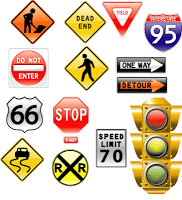 Privacy: Can’t keep anything private. Even when they promise not to tell, within hours everyone knows.
Privacy: Can’t keep anything private. Even when they promise not to tell, within hours everyone knows.
Resolving Conflict: Nothing ever gets resolved. No matter what you do or say. On the next visit it’s like you start all over again-from the beginning.
Communication: Never get a straight answer. No matter how clearly you ask the question.
Physical boundary: No touching. No kissing. No hugs.
Intimacy boundary: No talking about feelings. Never say “I love you.”
Honesty: Don’t tell the truth. Even if they ask.
etc etc
Of course there are “positive relationship rules” too. It doesn’t mean you always have to obey the rules. 🙂 But it does mean your relationship will be more conflict-free (not necessarily healthy) when you identify and follow the “Must-Follow” relationship rules.
CHALLENGE
Getaway from everything that runs by electricity (including a battery).
Sit.
Think.
Identify three “Must-Follow Relationship Rules” others must follow to maintain a relationship with YOU!
dr rick
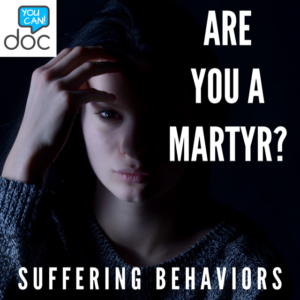
by Dr Rick | Apr 7, 2019 | Codependence
Check out:
Brief History of Codependence
How Do Normal Families Adjust To Addiction?
Rescuing Behaviors – First Responders
Persecuting Behaviors
Suffering behaviors are also known as being a “victim” or a “martyr.” Suffering behaviors typically occur after the codependent has tried everything. They have tried to rescue or enable the identified person without success. Next, they have tried to persecute – yell or control the identified person into change. Again with no success. So often they give up and suffer. A martyr willfully suffers in the name of love or duty.
Typical Suffering Behaviors Include:
Guilt
Typically, codependents ask themselves what they might have done to cause the identified person to have the problem (e.g. alcohol, viewing porn, anger) in the first place and how they might have prevented it. They might ask themselves, “What did we do wrong?” Often they review every detail of the identified person’s life. Many families who seek counsel report something like “We must have failed somewhere?” In a codependent’s thinking, one plus one is supposed to equal two. That is, if there is an addiction problem then there must be a parent or spouse problem. As a result, codepndents look and find reasons to feel guilty, regardless.
Is some cases, codependent parents may have indeed made some serious mistakes, and were abusive to their child, either physically or emotionally. Such behaviors certainly can predispose a person to substance abuse or some other problem. Often at this stage the codependent feels unworthy to maintain a church calling or even call upon God. They believe they are being justly punished for their sins by having a loved one suffer from an addiction or some other problem. Religious codpenendents not only carry the “oughts and shoulds” of their own making but also of their religious beliefs. Instead of “grace” they experience “guilt.”
Depression and Defeat
The end result of suffering behaviors is defeat. Nothing has worked. Prescription drug use and counseling might have been sought by the codependent to deal with the identified person. Withdraw from social activities, excessive worrying, and possible physical ailments begin to occur. Occasional thoughts of death may also exist. One good mother reported “I didn’t want to kill myself, but I often wished that my car might hit a telephone pole or something. I couldn’t stand the thought of my son being a drug addict and in prison.” Codependents acknowledge their powerlessness over their own lives and that of the addict. They experience in a personal way what Christ taught in Matthew 10:36: “And a man’s foes [enemies] shall be they of his own household.”
Loss of Personal Freedom
When a codependent feels responsible for how the identified person acts or feels, eventually they are led into bondage. As a codpendent assumes responsibility for the identified’s acts or feelings, the following occurs:
- You become subject to manipulation or control by the identified person.
- You eliminate yourself as a resource to the identified person.
- You tend to rescue the identified person.
- Your self-esteem goes down.
- You become depressed and experience mood swings based on the identified person’s behavior.
- You interfere with God’s great gift of agency and the law of justice.
- You are not free to act for yourself
I remember well the story, a parents of an adult drug addict still living at home. The father pulled a large set of keys out of his pocket. The father explained “Our son steals everything… we have to keep everything locked up…”
Ways to Tell If You Are Being a Martyr in Your Relationship
 You are angry and resentful because your relationship is disappointing to you. Often, you think that the main problem rests in your spouse’s behavior. In your opinion, your spouse or mate should be doing things differently, and this would solve everything.
You are angry and resentful because your relationship is disappointing to you. Often, you think that the main problem rests in your spouse’s behavior. In your opinion, your spouse or mate should be doing things differently, and this would solve everything.
You communicate with people who cannot make any changes. You may talk to friends, for example, rather than communicating directly with your spouse or mate.
You whine, scapegoat, complain, and may even describe yourself or see yourself as a victim. Although you may have endured some bad experiences in your relationship, you fail to own how you create, promote, or allow these outcomes.
You have a hard time owning your role in the problems that you discuss. Rather than saying, “Next time, I’m going to ___,” you stay stuck in what your partner should have done differently. If someone who you complain to offers a suggestion, your first reaction is to reject it. Following this, you might find that you rationalize or justify why you must continue to behave as you are.
The problem is chronic problem—it has endured more than three months. In addition, you see yourself as chronically unhappy in the relationship, and its deeper problems remain unsolved.
You begin to see yourself as a storyteller, moving from one negative story to the next. You may even find yourself rehearsing what you’ll tell friends and family or a therapist, coach, or preacher, rather than rehearsing strategies to actually correct the problems.
Underneath your anger and resentment, there may be depression and fear. These feelings tend to surface after the storm of your anger.
You may appear very capable to others, but you really see yourself as dependent upon your spouse or partner. This leads you to avoid asking for what you want directly, being assertive, getting help, or leaving the relationship.
You may behave as though you are trapped, even when some of your problems may have ready solutions. Trapped people often fluctuate between acting helpless and lashing out.
Are You A Relationship Martyr?
Co-dependency Mental Health America
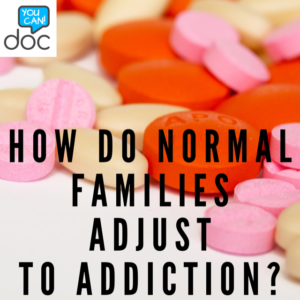
by Dr Rick | Mar 24, 2019 | Addiction, Codependence
Check out:
Brief History of Codependence
Rescuing Behaviors – First Responders
Persecuting Behaviors
Suffering Behaviors – Are You A Martyr?
Normal healthy families adjust to addiction and other’s in need, by developing predictable behaviors. These behaviors are typically referred to as “codependence.” Codpendent behaviors are viewed as dysfunctional. The most common codpendent behaviors include:
Rescuing Behaviors
Rescuing behaviors often protect the identified person from immediate consequences of their own irresponsible behavior and prevent growth from occuring. Surrounding loved-ones exhibit behaviors like denying, increased religious activities, coverying-up, and lying. Rescuing behaviors can be viewed as surrounding codependents trying to “fix” the identified person with “love” and “help.”
Persecuting Behaviors
As noted, the surrounding family members first try to love the identified person into “good” behavior by rescuing or enabling them. It doesn’t work. The rescuer gets fed up, angry and resentful with the person with the problem, and then turns to persecuting behaviors. A codependent’s typical reaction to a loved-one’s bad behavior are persecuting behaviors like: resentment, nagging, threatening, yelling, and blaming.
Suffering behaviors
Suffering behaviors are also known as being a “victim” or a “martyr.” Suffering behaviors typically occur after the codependent has tried everything. They have tried to rescue or enable the identified person without success. Next, they have tried to persecute – yell or control the identified person into change. Again with no success. So often the next step is to give up and suffer.Typical suffering behaviors include: guilt, loss of freedom, depression, and shame.
Here is a discussion with an addict, Bryn and his parents Cathy and Justin. In the discussion below drug addiction is the problem of concern. The same codependent behaviors occur with porn use, alcohol use, gambling, spending, etc.
(C) docyoucan 2019
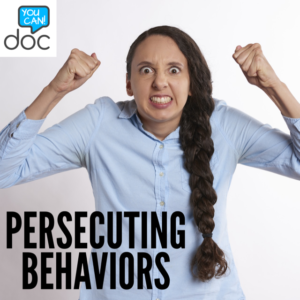
by Dr Rick | Mar 11, 2019 | Codependence
Check out:
Brief History of Codependence
How Do Normal Families Adjust To Addiction?
Rescuing Behaviors – First Responders
Suffering Behaviors – Are You A Martyr?
Persecuting Behaviors
Start When The Rescuer Gets Fed Up, Angry and Resentful
Persecuting behaviors comprise the group of behaviors typically experienced by those adjusting to a person with a problem. As noted, the surrounding family members first try to love the identified person into “good” behavior by rescuing or enabling them. It doesn’t work. The rescuer gets fed up, angry and resentful with the person with the problem, and then turns to persecuting behaviors.
The persecutor says things like “Why don’t you grow up! Why don’t you take some responsibility! Why do I have to do everything around here! Why don’t you appreciate what I am doing for you! This is unfair!“

Loved ones become angry because of the identified person’s harmful or embarrassing actions. By definition the identified person has a problem whether it be alcohol, viewing porn, anger, laziness,… etc. Therefore, there is always a “bad’ behavior to be irritated about. A typical reaction to a loved-one’s bad behavior is resentment nagging, threatening, yelling, and blaming.
The position of the persecutor is “It’s all identified person’s fault!” If that person would only stop using alcohol, viewing pornography, get a job, budget their money, or do or not do something – then everything would be okay! Furthermore the persecutor believes he/she can make that change happen if they can yell enough, talk enough, or threaten enough. Or in some cases it’s the “silent treatment” or “cold shoulder.” Either way the message is clear – “I hate this. I resent you. You better stop.”
The diagram below illustrates the common reaction to a person with a problem. One direction is the codependent isolating and experiencing “Suffering Behaviors.” We’ll talk about Suffering Behaviors later. The other common reaction is “Persecuting Behaviors.” Of course recognizing personal feelings and being assertive about those feelings is the healthy behavior.
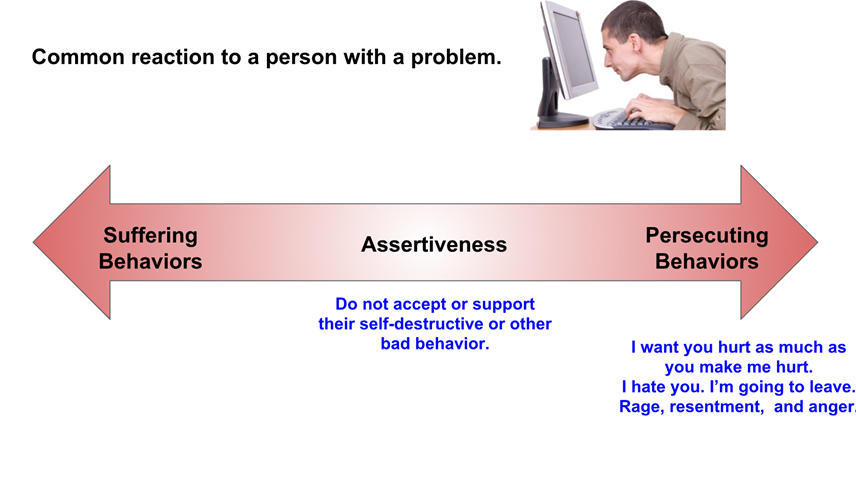
PERSECUTING BEHAVIORS INCLUDE:
Religious activities decrease
Increased religious behaviors which the codpendent tried earlier as a rescuing behavior fail. Reality sets in because the identified person continues to exhibit the unwanted behavior e.g. viewing porn, alcohol regardless of how many prayers were said. The codependent feels that the prayer and other religious activities attempted as rescuing behaviors were unsuccessful. The codependent, out of despair, often turns away from God to his or her own personal power, returning to the previous level of religious activity because “God didn’t solve” the problem.
Threats
 The codependent becomes desperate because all of the attempts to control or fix the addict seem to have failed. He or she may issue a variety of threats during this stage of codependence. These threats are usually extreme in nature. In the case of a spouse, divorce or separation are suggested. Often in the religious family, threats take the form of laying guilt or shame or the addict in and attempt to force the addict into a sobriety. Such threats are unsuccessful because of their extreme nature and the fact that they are seldom implemented. Most common threats include: “Next time I’m divorcing / leaving!” I heard a teen alcoholic explain this best description of a threat, “All my parents do is bark, they never bite.”
The codependent becomes desperate because all of the attempts to control or fix the addict seem to have failed. He or she may issue a variety of threats during this stage of codependence. These threats are usually extreme in nature. In the case of a spouse, divorce or separation are suggested. Often in the religious family, threats take the form of laying guilt or shame or the addict in and attempt to force the addict into a sobriety. Such threats are unsuccessful because of their extreme nature and the fact that they are seldom implemented. Most common threats include: “Next time I’m divorcing / leaving!” I heard a teen alcoholic explain this best description of a threat, “All my parents do is bark, they never bite.”
Nagging behaviors
The persecutor says the same thing over and over again thinking they surely could say the right thing that would eventually change the identified person’s behavior. They subtly insert rude manipulative comments. Perhaps believing they could hurt or shame the identified person enough that of course they would stop the unwanted behavior and start the wanted behavior. At times, the nagging behaviors can be non-verbal like facial expressions, sighs, or simply not talking-cold shoulder treatment.
Irrational Behaviors
As the addiction/ or problem progresses, codependents become increasingly desperate and reach a pint where they will try almost anything to control the addiction problem. One active member of a church placed honey in her husband’s bedding when he continually came home with pornographic magazines. Other common irrational behavior is hiding the laptop, dumping out the alcohol, etc.
Identified person’s response
Well what does the identified person do with the unwanted behavior, They typically continue the unwanted behavior – porn, alcohol etc after being the recipient of the persecuting behaviors feels he deserves it, look, after all, he says to himself, at what I’ve been putting up with.
Here is the Facebook Live video on Persecuting Behaviors.
Follow me on
(C) Docyoucan 2019
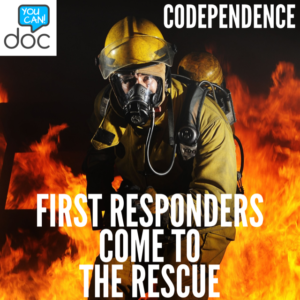
by Dr Rick | Mar 4, 2019 | Codependence
Check out:
Brief History of Codependence
How Do Normal Families Adjust To Addiction?
Persecuting Behaviors
Suffering Behaviors – Are You A Martyr?
FIRST RESPONDERS COME TO THE RESCUE
– IN THE NAME OF LOVE
Generally, it is impossible for those with addictions or other problem behavior to maintain their dysfunctional behavior in isolation. They need a supporting system of codependence.
An addict or person with a problem needs you!
The dysfunctional behaviors developed by surrounding loved ones in an effort to help a person with a problem behavior are referred to as “Codependence.” I refer to these codependent behaviors as Rescuing Behaviors, Persecuting Behaviors, and Suffering Behaviors. It has been my experience.the primary goal of codependence is to help the identified person and to show love. Certainly, there is no great sin in trying to help or to love another person!
Unfortunately codependent behaviors are generally ineffective in changing another person’s behavior. Rescuing Behaviors, Persecuting Behaviors, and Suffering Behaviors tend to support and to maintain the problem behavior. I use the term “identified person” to represent the loved-one with a problem behavior. The problem behavior may be an addiction, mental illness, physical handicap, anger, self-harm, etc.
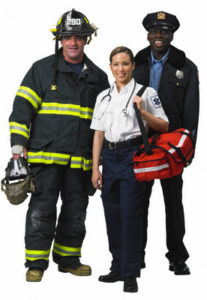
© Tom Grill/Corbis
In our Christian society, many believe that if a person is in need, we are responsible to help. Behind every irresponsible addict – or identified person – is often a hyper-responsible person. Rescuing behaviors are often the initial response of “first responders”. First responders are among the first to arrive and provide assistance at the scene of an emergency, such as an accident and natural disaster. Their job: identify the problem and provide immediate help. If there is a fire, put it out!
These rescuing behaviors often protect the identified person from immediate consequences of their own irresponsible behavior and prevent growth from occuring.
The damage caused by Rescuing Behaviors include:
- When done in excess the Rescuer becomes worn out, exhausted, etc. Saying, “We can do this.” Really meaning “I’ll do this for you.”
- The identified person with a problem behavior becomes weaker – because someone is doing for them what they could have done for themselves. Saying, “Here let me do this for you.”
- The Rescuer reinforces the identified person’s inability to scuceed. Saying, “You really need my help. You can’t do this.”
Here are examples of a few Rescuing Behaviors.
Denying
Denial is a common behavior developed by surrounding loved ones of an identified person. Several assumptions follow the admission that a member of the family has a problem. One assumption is the false belief, “If there is a problem with them then there must be a problem with me.” In essence, a codpendent assumes they have failed because their loved-one has a problem. If it is your child, then you have failed as a parent. If it is your spouse, then you have failed as a partner. If it is your parent, then you have failed as a child. Much pain, guilt, and confusion come with accepting the truth that a loved one has a problem behavior like addiction.
 The intensity of denial seems greater with those who are sincerely involved in their religion. Often, the more active a person is in religion, the more difficult it will be for them to determine healthy boundaries for helping. A Christian codependent mistakenly equates “Rescuing Behaviors” with “Christ-like love.” Religious persons tend to be so fearful that an addiction or some other problem may be occurring in their family that they deny and overlook the clear signs of it. An analogy that helps explain the concept of denial is that of a child who recently went swimming. If that child were standing dripping wet by the swimming pool, wearing a swimming suit, we would not likely ask questions like “Where have you been? What have you been doing?” Codependents, often confront an identified person in a similar fashion – although clearly observing evidence of a problem behavior whether it be anger, viewing porn, alcohol, etc, a codependent may ask something like “What’s going on?” The most classic case of denial is the codependent acting like nothing is wrong- not talking about “the elephant in the front room.”
The intensity of denial seems greater with those who are sincerely involved in their religion. Often, the more active a person is in religion, the more difficult it will be for them to determine healthy boundaries for helping. A Christian codependent mistakenly equates “Rescuing Behaviors” with “Christ-like love.” Religious persons tend to be so fearful that an addiction or some other problem may be occurring in their family that they deny and overlook the clear signs of it. An analogy that helps explain the concept of denial is that of a child who recently went swimming. If that child were standing dripping wet by the swimming pool, wearing a swimming suit, we would not likely ask questions like “Where have you been? What have you been doing?” Codependents, often confront an identified person in a similar fashion – although clearly observing evidence of a problem behavior whether it be anger, viewing porn, alcohol, etc, a codependent may ask something like “What’s going on?” The most classic case of denial is the codependent acting like nothing is wrong- not talking about “the elephant in the front room.”
Substance abuse example
Perhaps the Golden Question most commonly asked by religious codependents when alcohol, drugs or paraphernalia are found is, ‘Whose is this?” The substance abuser’s Golden Answer is, “I’m holding it for a friend.” We want to believe their responses so we continue to rescue them from the consequences of their behavior by denying the obvious and accepting their lies. Often it takes the equivalent of a Grand Jury conviction for a religious family to admit that a loved one has a problem.
Increased Religious Activities
Religious activities often increase during the first stage of codependency. The codependent firmly believes that fasting, prayer, and careful obedience to each of God’s commandments will cure the addict – identified person. After discovering a family member is using drugs, or pornography, etc loved ones often commit to reading the scriptures, going to church, and having saying more prayers than ever before. The underlying goals for such behavior appears to be “Get God to Fix Him.” The increased religioius activities isn’t the problem. The problem is their purpose is a temporary fix and not a change of heart.
Covering Up
Covering up is a specific behavior that codependents exhibit to clean up or make things better after the identified person has been irresponsible. For example, a wife might call her spouse’s work to report him “ill” with the flu when , in reality he was in bed with a hangover. In an effort to save their child from a police record and experiences in lock-up parents of an identified person will run to the police station to rescue their child. A codependent will clean up the broken glass or hide the empty beer cans to make sure no one finds out. At times a codependent will even miss important church meetings in order to perform the necessary cover-up behaviors.
A codependent often becomes so effective in covering up the consequences of the identified person that even the identified person might very truthfully say “There’s no problem.” In other words, even the identified person does not realize the seriousness of the problems that he or she might be causing because the codependent has done such thorough job in covering up.
Lying
Rescuing behaviors become so intense that codepndents will begin to tell “white lies.” For example, when church leaders, friends and family members ask “How are things going?“, the rescuer responds with “It’s not bad,” or “I’m fine,” or “It’s okay,” The lying process is called “minimization,” and it is a rescuing behavior. The lies are typically unintentional and often unnoticed. A codependent lies to children, to neighbors, to church leaders, and most commonly to self.
Summary:
In summary, typically the identified person – the person with the problem e.g. alcohol use, viewing pornography, anger etc. already believe they can’t change. When you exhibit rescuing / enabling behaviors you’re demonstrating the same- You don’t believe they can change either. 😢
Here is my Facebook Live video on this topic:
The Doc #docyoucan #codependence
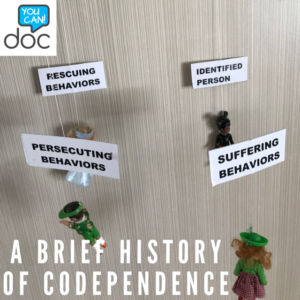
by Dr Rick | Feb 25, 2019 | Codependence
Check out:
How Do Normal Families Adjust To Addiction?
Rescuing Behaviors – First Responders
Persecuting Behaviors
Suffering Behaviors – Are You A Martyr?
A normal healthy family (and even families that aren’t healthy) can adjust to a family member’s “problem behavior” by developing “codependence.” A family member’s “problem behavior” may include such behaviors as: pornography addiction, substance abuse, mental illness, health problems, disabilities, etc. etc. “Codependence” is the name of the dysfunctional behaviors that surrounding family members develop as they adapt to the family member who has the “problem behavior.”
The dysfunctional adaptive behaviors that surrounding family members develop are similar across different circumstances. For example, codependent behavior exhibited by a wife adjusting to a husband’s porn problem would be similar to a dad adjusting to a daughter’s mental illness. In my experience the core components of codependence are:
1) A family member with a problem behavior- some form of addiction, inability, or disability. This behavior can be intentional e.g. alcohol use or a consequence of nature e.g. down’s syndrome. The key ingredient is a family member with a problem and perceived as needing help.
2) A family member (or members) adapting to the person with the problem using a series of dysfunctional coping skills. These dysfunctional codependent behaviors are easily identified and have a pattern.
Of course not all families adjust to another’s problem with codependence, many families adjust in healthy ways.
There are numerous explanations of these patterns of codependence. Here are just a few.
Codependence and 12-Step Groups
Codependence has its’ origin with Al-Anon 12-step family support groups. Al-Anon members are people, who are worried about someone with a drinking problem. Many who go to Al-Anon/Alateen are in despair, feeling hopeless, unable to believe that things can ever change. Al-Anon members want their lives to be different, because they have developed dysfunctioinal coping behavors as they have lived with an “alcoholic.” These codpendent coping behavors have failed to bring about change. Al-Anon teaches its members new coping behaviors whether the alcoholic is still drinking or not. Al-Anon was one of the first organization to promote the concept of “Family Illness.”
Alcoholism is a family disease. The disease affects all those who have a relationship with a problem drinker. Those of us closest to the alcoholic suffer the most, and those who care the most can easily get caught up in the behavior of another person. We react to the alcoholic’s behavior. We focus on them, what they do, where they are, how much they drink. We try to control their drinking for them. We take on the blame, guilt, and shame that really belong to the drinker. We can become as addicted to the alcoholic, as the alcoholic is to alcohol. We, too, can become ill. (Al-Anon).
In fact now we have CODA, CoDependants Anonymous. CODA is a 12-step support group focusing specifically on “Codependence.” CODA has its’ list of Patterns and Characteristics of Codependence. CODA identifies codependent behaviors like: Avoidance Patterns, Control Patterns, Compliance Patterns, Low Self-Esteem Patterns, and Denial Patterns.
Melody Beattie
Melody Beattie, in her book Codependent No More: How to Stop Controlling Others and Start Caring for Yourself, defines a codependent as:
“…One who has let another person’s behavior affect him or her, and who is obsessed with controlling that person’s behavior. The other person might be a child, an adult, a lover, a spouse, a brother, a sister, a grandparent, a parent, a client, or a best friend. He or she could be an alcoholic, a drug addict, a mentally or physically ill person, a normal person who occasionally has sad feelings, or one of the people mentioned earlier.”
The specific signs of codependency can often look different depending on the person experiencing it.
Karpman Drama Triangle
The Karpman Drama Triangle is a social model of human interaction – the triangle maps a type of destructive interaction – codependence, that can occur between people in conflict. The drama triangle model is a tool used in psychotherapy, specifically transactional analysis, and often in 12-step support groups. Here is a brief description of the three “codependent” roles involved in the triangle:
The Victim: (Victim) The Victim’s stance is “Poor me!” The Victim feels victimized, oppressed, helpless, hopeless, powerless, ashamed, and seems unable to make decisions, solve problems, take pleasure in life, or achieve insight.
The Rescuer: (Hero) The rescuer’s line is “Let me help you.” A classic enabler, the Rescuer feels guilty if they don’t go to the rescue. Yet their rescuing has negative effects: It keeps the Victim dependent and gives the Victim permission to fail. The rewards derived from this rescue role are that the focus is taken off of the rescuer. When they focus their energy on someone else, it enables them to ignore their own anxiety and issues.
The Persecutor: (Villain) The Persecutor insists, “It’s all your fault.” The Persecutor is controlling, blaming, critical, oppressive, angry, authoritative, rigid, and superior.
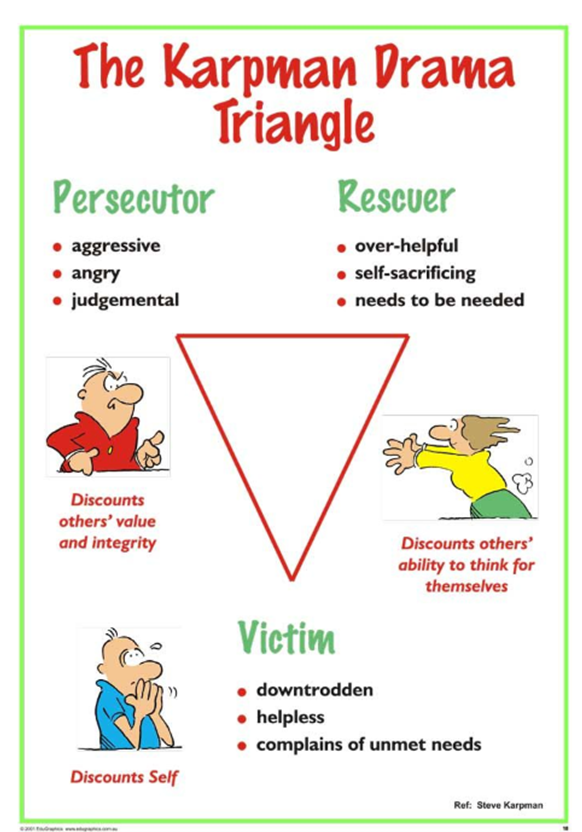
Although tthe names have changed, but the concepts remain the same. Here is a brief video An Introduction to the Drama Triangle. This 3 minute video uses the labels Villain, Hero, and Victim to explain the copdependent roles involved in the Drama Triangle.
Over the years, everyone seems to have come on board with their own perspective of codependence. Here’s Oprah’s take. For example check-out her article How to Stop Being a Martyr.
Here is my Facebook Live video on this topic:
Next go to Rescuing Behaviors- First Responders
Privacy: Can’t keep anything private. Even when they promise not to tell, within hours everyone knows.


 You are angry and resentful because your relationship is disappointing to you. Often, you think that the main problem rests in your spouse’s behavior. In your opinion, your spouse or mate should be doing things differently, and this would solve everything.
You are angry and resentful because your relationship is disappointing to you. Often, you think that the main problem rests in your spouse’s behavior. In your opinion, your spouse or mate should be doing things differently, and this would solve everything.



 The codependent becomes desperate because all of the attempts to control or fix the addict seem to have failed. He or she may issue a variety of threats during this stage of codependence. These threats are usually extreme in nature. In the case of a spouse, divorce or separation are suggested. Often in the religious family, threats take the form of laying guilt or shame or the addict in and attempt to force the addict into a sobriety. Such threats are unsuccessful because of their extreme nature and the fact that they are seldom implemented. Most common threats include: “Next time I’m divorcing / leaving!” I heard a teen alcoholic explain this best description of a threat, “All my parents do is bark, they never bite.”
The codependent becomes desperate because all of the attempts to control or fix the addict seem to have failed. He or she may issue a variety of threats during this stage of codependence. These threats are usually extreme in nature. In the case of a spouse, divorce or separation are suggested. Often in the religious family, threats take the form of laying guilt or shame or the addict in and attempt to force the addict into a sobriety. Such threats are unsuccessful because of their extreme nature and the fact that they are seldom implemented. Most common threats include: “Next time I’m divorcing / leaving!” I heard a teen alcoholic explain this best description of a threat, “All my parents do is bark, they never bite.” 

 The intensity of denial seems greater with those who are sincerely involved in their religion. Often, the more active a person is in religion, the more difficult it will be for them to determine healthy boundaries for helping. A Christian codependent mistakenly equates “Rescuing Behaviors” with “Christ-like love.” Religious persons tend to be so fearful that an addiction or some other problem may be occurring in their family that they deny and overlook the clear signs of it. An analogy that helps explain the concept of denial is that of a child who recently went swimming. If that child were standing dripping wet by the swimming pool, wearing a swimming suit, we would not likely ask questions like “Where have you been? What have you been doing?” Codependents, often confront an identified person in a similar fashion – although clearly observing evidence of a problem behavior whether it be anger, viewing porn, alcohol, etc, a codependent may ask something like “What’s going on?” The most classic case of denial is the codependent acting like nothing is wrong- not talking about “the elephant in the front room.”
The intensity of denial seems greater with those who are sincerely involved in their religion. Often, the more active a person is in religion, the more difficult it will be for them to determine healthy boundaries for helping. A Christian codependent mistakenly equates “Rescuing Behaviors” with “Christ-like love.” Religious persons tend to be so fearful that an addiction or some other problem may be occurring in their family that they deny and overlook the clear signs of it. An analogy that helps explain the concept of denial is that of a child who recently went swimming. If that child were standing dripping wet by the swimming pool, wearing a swimming suit, we would not likely ask questions like “Where have you been? What have you been doing?” Codependents, often confront an identified person in a similar fashion – although clearly observing evidence of a problem behavior whether it be anger, viewing porn, alcohol, etc, a codependent may ask something like “What’s going on?” The most classic case of denial is the codependent acting like nothing is wrong- not talking about “the elephant in the front room.” 
